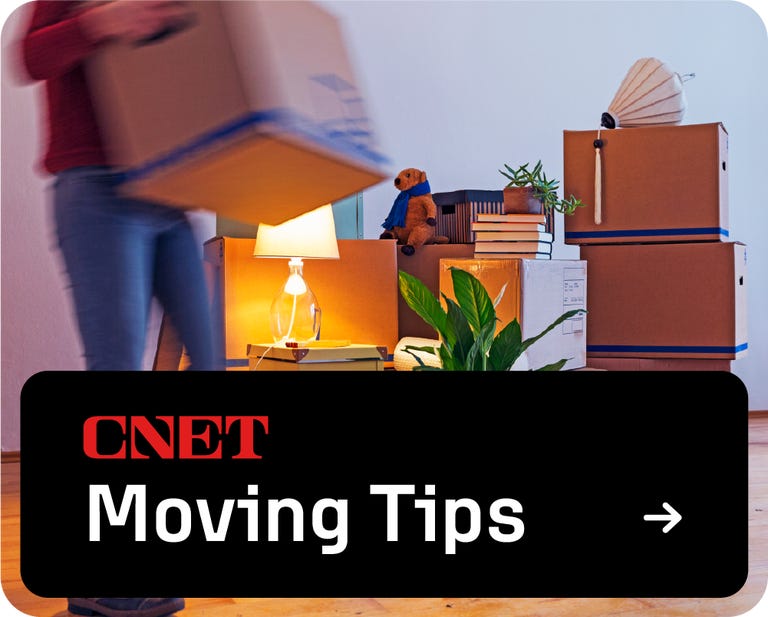Moving? Don’t Wait to Set Up Your Internet Service. Here’s How to Do It

Moving is more than moving furniture and packing/unpacking box after box. You will also need to set up home services and utilities in your new location, including your Internet connection. Although some moving tasks are more stressful and difficult than others, setting up the Internet in your new home should be fairly easy.

Most of them internet providers make it easy to transfer service when you move, but if your current provider doesn’t serve your new address, you’ll need to take a few extra steps to change your internet provider. Even if your current provider is available at your new address, it may be worth checking if there is a new one There are internet providers in the area.
Here’s how to achieve a seamless internet service transition when you move from your current address to your new home, whether you’re transferring service or signing up with a new provider. For more moving tips, see our picks for the best moving companies, how much should you tip the movers and How to find out what size moving truck you need.
Internet Service Relocation Checklist
- Check what providers and plans are available at your new address.
- Decide if yes sign up for a new ISP or transfer your current service (if applicable).
- Contact your current provider about transferring or canceling your service.
- Set up service with your new provider (if applicable).
- Carefully pack the equipment and take it to your new home if you are transferring service, or follow the provider’s instructions for returning it.
- Place your existing or new equipment in a good place in your new home.
Which ISPs are available at my new address?
Before you can decide to transfer your Internet service or sign up for a new one, you’ll need to know your options. Many websites let you check for local ISPs, including CNET—just click “Edit Location” in the tool above and enter your address to see available providers and plans.
When using these sites or tools, or checking availability on the provider’s official site, you’ll get the best results when you use an address as opposed to something generic like “internet providers in charlotte north carolina.” Most providers operate in specific service areas, so availability may vary by zip code or even neighborhood. When moving to another city, it’s not always safe to assume that your current provider will be available at your new address, or that your new home won’t have more internet options than your current address.

We can help you find out which ISPs are available in your new area.
How about internet for the apartment I’m moving into?
When moving into a new apartment, check with the leasing office to see if the complex has a major Internet provider. While The Federal Communications Commission is looking to increase broadband competition in apartmentsyour apartment may be wired for certain type of internet servicelike cable, fiber or even fixed wireless. In such cases, your best option will probably be to go with whichever provider serves the complex, but you may be able to look into other options. Again, talk to your leasing office about what’s available before you move in.
How to switch or transfer internet service when you move
Once you’ve decided which ISP you want, whether it’s your current provider or a new one, and plan that best suits your needsit’s time to contact the suppliers.
Obviously you will only need to contact one provider and give them your move out and move in dates if you are transferring service. Some providers such as Verizon Fios and Xfinityallow you to schedule your service transfer online, while others such as Spectrumrequire you to call customer service.
Your provider may charge a transfer fee. My advice is yes negotiate with your supplier and see if they will waive the fee. This may require a call to customer service, even if you can transfer your service online, which may not be worth your time when you’re trying to pack. Transfer service fees are often low, in the $10 to $20 range, but every dollar counts when moving.
Switching to a new Internet Service Provider
In the case of switching providers, I would recommend contacting your current provider first. This way you can plan your disconnection date and get details of any remaining payments and what you need to do with your equipment, all good to know before moving day.
Also, suppose your current provider is also available at your new address and you express interest in switching to a new provider. In that case, they may offer you a lower rate or other incentives to keep your business—benefits you may not get when you simply transfer your service.
When switching to a new provider because your current provider is unavailable or your new address offers options for faster internet provider with cheaper plans, try to set up your new service well in advance of the move. This way, you’ll have the best chance of scheduling your installation as close to your move-in date and time as possible. Most providers allow you to sign up for service online and schedule your installation date right from your computer or phone. In some cases, you can also select a preferred time period for the installation.
If self-installation is available and you’re comfortable with it, this may be the best way to ensure that the service is set up when you want it. Just be aware that self-installation may require picking up the equipment or waiting for it to arrive in the mail.
Here’s what to do with your internet equipment when you move
Your provider will handle things on the service side of your internet connection, but you will be responsible for the equipment.
Upon transfer of service or if you use your own network devices, you will probably be expected to pack it up and take it with you. If you still have the box the hardware came in, this will be the best option for storage and moving. Otherwise, feel free to throw it in a box with other things, although you may want to wrap it in a towel or thin blanket to prevent damage during the move. Also, and this is important, make sure your gear doesn’t get wet.
Switching providers will involve returning your old equipment and getting new devices. Many vendors have physical locations where you can return your gear, but if yours doesn’t, or if traveling and waiting in line doesn’t bother you, mailing can also be an option.
Getting your new equipment comes down to do-it-yourself or professional installation. For self-installation, you may need to pick up your devices from a physical location or receive them by mail. If you don’t mind, I would recommend picking it up in person so you have it on your moving day. Again, try transferring the hardware into the box it came in, and above all, keep it from getting wet.
If you choose professional installation, you can count on the technician to bring the necessary accessories and cables – one less thing to worry about when you move.

While setting up your network, try to find a central, open location for your router that’s free of walls and other obstructions, as well as interference from nearby electronics.
Setting up your new Wi-Fi network
With a professional installation, your technician will know the best place to install your devices and should test your connection before leaving. However, there are times when you might want to move your equipment after installation to get the best Wi-Fi connection throughout your home.
During self-installation or when moving your equipment after a professional installation, try to place your router in a central location in your home, as high as possible and away from large obstructions such as walls or other electronics. An extra-long Ethernet cable can be handy to have on hand, making it easier to move the router to a good location that isn’t necessarily right next to the modem.
After installation don’t forget to test your internet connection. If you’re not getting the speeds you expect, try resetting or repositioning your router. Once you’ve set up your equipment and are happy with your speeds, your internet service move is complete. Now onto those boxes labeled “kitchen”.
Frequently Asked Questions About Internet Service When Moving
How do I pack my router for moving?
When it comes to electronics, routers are less fragile than a TV, tablet, or other device with a screen that can easily be damaged. You’ll still want to pack and ship it carefully to avoid damaging the internal components or the outer casing (including all buttons and lights).
Wrapping your router in newspaper or cloth, such as a pillow case, will help protect your router during a move, but bubble wrap is probably the best protective barrier. If you put your router in a box with other items, make sure that the items, including the router, are packed tightly to avoid shifting during the move.
How long does it take to set up internet in a new location?
If you already have an Internet provider and service for your home, you can set up a Wi-Fi network in minutes. Just turn on your router and follow the instructions to create a Wi-Fi network and password, then start connecting your devices.
A professional installation can take a little longer, perhaps up to three or four hours, if the installer has to run cables or troubleshoot connection issues.
Will my ISP set up internet in my new home when I move?
Unless you have an internet connection that requires professional installation, such as satellite internet, don’t rely on it. If your new home is already wired for service, setup is little more than turning on your router and creating your new Wi-Fi network. You won’t need a technician for this, and your ISP probably won’t send one, although they should provide technical support online or over the phone if you need help.
Will my old Wi-Fi equipment work for internet in my new home?
If you cancel service with your current provider and choose a new one, any equipment you own, such as Wi-Fi routers and extenders, may be compatible with your new service.
However, this will not always be the case. When you switch to a new type of connection, say cable Internet to fiber, you’ll need a different type of modem.
If you’ve been planning to take leased equipment from your old provider to your new one, be aware that this will likely result in a hefty fee from your previous ISP. Not only that, but the devices will almost certainly not be compatible with your new service.
Where should I place my router in my new home?
Try to place your router in a central location in your home so that your router’s Wi-Fi range can reach all corners of your home. It is also recommended that you place your router somewhere high, such as the top of a bookshelf, and free of obstructions. To be avoided “hides” it. as this can limit range and possibly cause your router to overheat.
If your router is in the perfect place but still experience dead spots, consider adding a Wi-Fi extender to your network or upgrading to mesh Wi-Fi system for better coverage.



